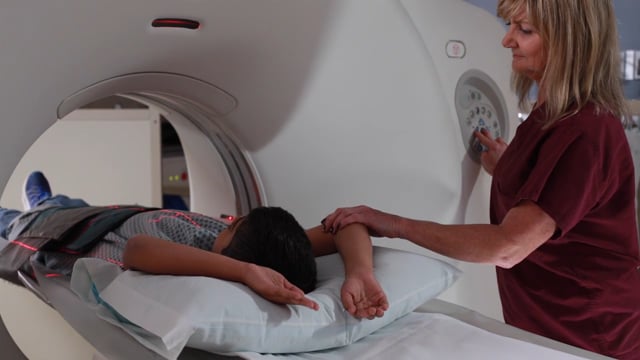CT (CAT) Scans
What Are CT (CAT) Scans?
A computed tomography scan (CT scan), also called computed axial tomography scan (CAT scan), is a type of imaging test. It uses computers and a rotating X-ray machine to take cross-sectional pictures of the body. CT scans give doctors more detailed images than X-rays can provide. Unlike X-rays, they can show organs, soft tissues, and blood vessels in addition to bones.
CT scans are painless. A CT scan involves more exposure to radiation than a regular X-ray does, but the risk is small.
How Are CT Scans Done?
A person getting a CT scan lies on a table, which slowly moves into a large, donut-shaped machine. As the machine rotates around the person’s body, it takes many X-rays at different angles. The computer turns these into tomographic (cross-sectional) images of the body. It can also put them together to form a three-dimensional (3D) image.
The CT scans are done by radiographers or radiology technologists. Patients can expect to hear a whirring or buzzing noise. They must hold still during the scan because moving will blur the images.
Why Are CT Scans Done?
Doctors order CT scans to screen for some conditions and diagnose others. Often, they order them to:
- Look for causes of symptoms like belly pain.
- Look for bone and joint problems.
- Look for internal injuries and bleeding.
- Look for tumors, blood clots, fluid buildup, or infections.
- Guide treatments and procedures like biopsies and surgeries.
- See if treatments like chemotherapy or radiation therapy are shrinking a tumor.
What Are the Types of CT Scans?
CT scans can check many parts of the body. Scans done on kids often focus on:

